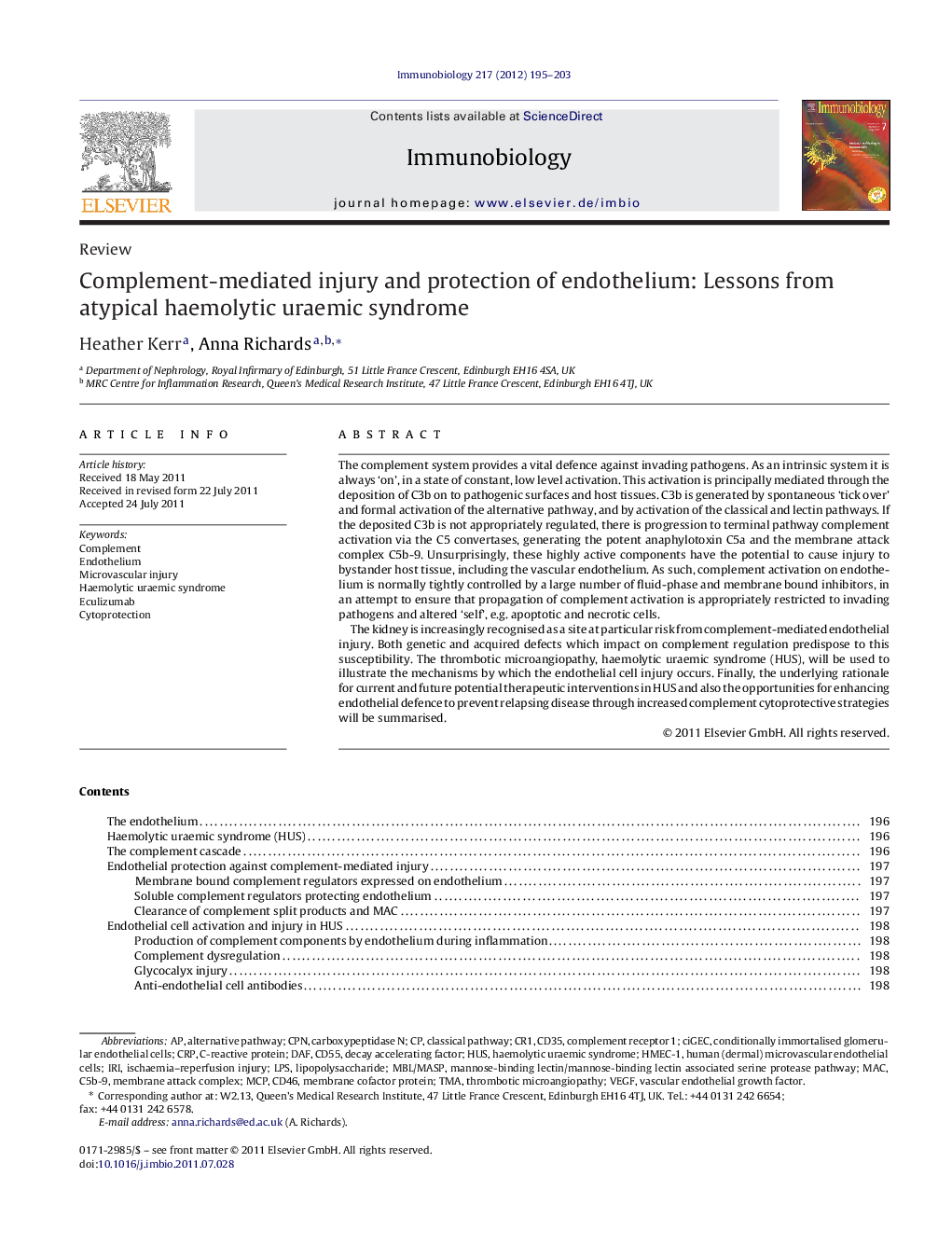| Article ID | Journal | Published Year | Pages | File Type |
|---|---|---|---|---|
| 10941094 | Immunobiology | 2012 | 9 Pages |
Abstract
The kidney is increasingly recognised as a site at particular risk from complement-mediated endothelial injury. Both genetic and acquired defects which impact on complement regulation predispose to this susceptibility. The thrombotic microangiopathy, haemolytic uraemic syndrome (HUS), will be used to illustrate the mechanisms by which the endothelial cell injury occurs. Finally, the underlying rationale for current and future potential therapeutic interventions in HUS and also the opportunities for enhancing endothelial defence to prevent relapsing disease through increased complement cytoprotective strategies will be summarised.
Keywords
LPSHMEC-1CPNTMAeculizumabIRIIschaemia–reperfusion injuryMicrovascular injuryEndotheliumCytoprotectionHUSHaemolytic Uraemic SyndromeVascular endothelial growth factorVascular Endothelial Growth Factor (VEGF)lipopolysaccharideComplementalternative pathwayclassical pathwaythrombotic microangiopathyC-reactive proteinCRPmembrane cofactor proteinmembrane attack complexDecay accelerating factorcarboxypeptidase Ncomplement receptor 1
Related Topics
Life Sciences
Biochemistry, Genetics and Molecular Biology
Cell Biology
Authors
Heather Kerr, Anna Richards,
